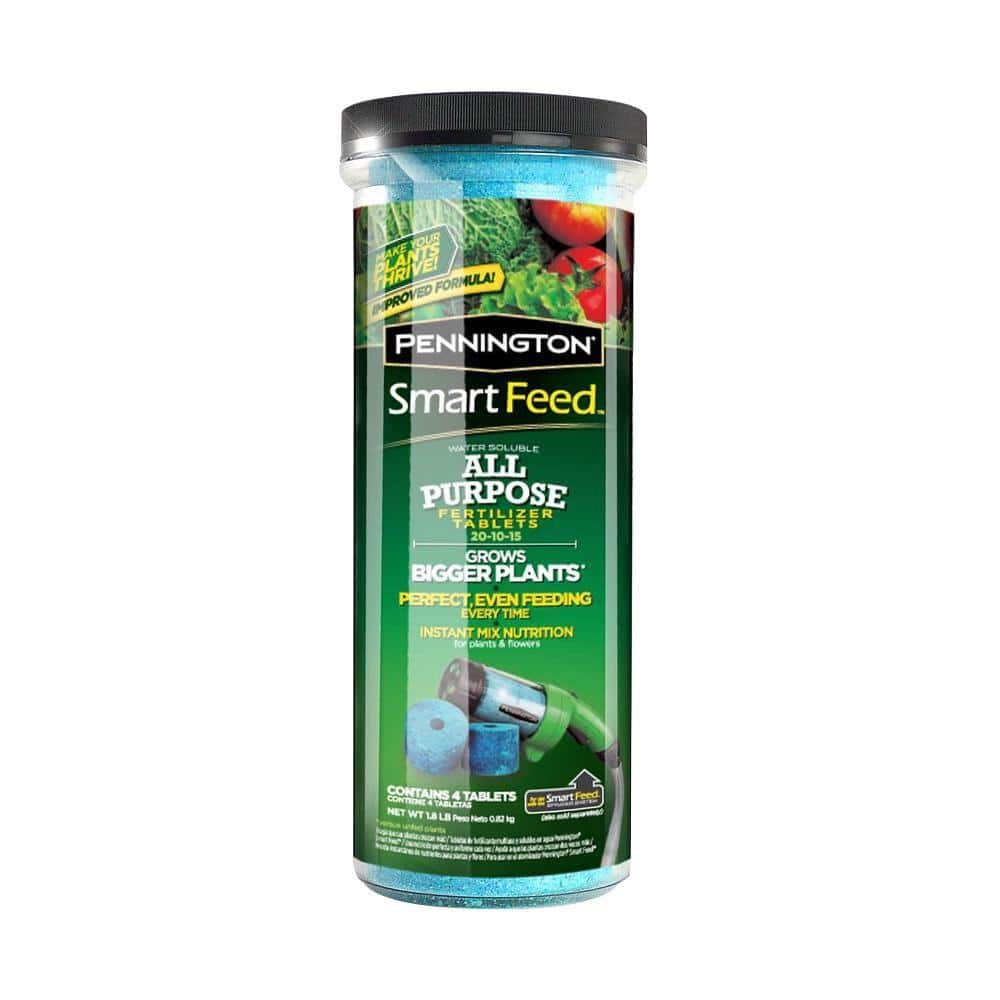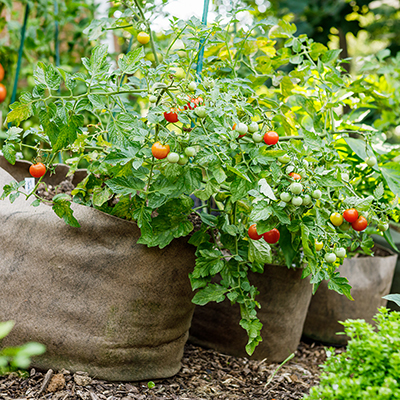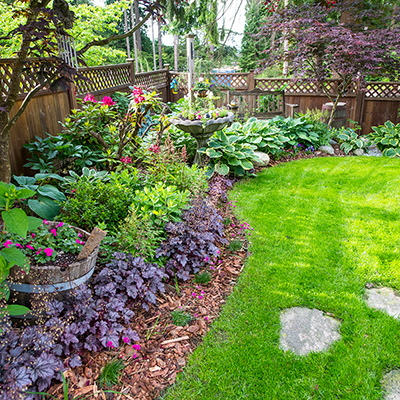How to Avoid 8 Common Garden Mistakes

Last updated July 24, 2024
Admit it, you want the perfect, low-maintenance garden and you want it now. The reality is that no matter your experience level, gardening involves trial and error.
What works in one corner of your garden may be a complete failure in another. Gardening mistakes can happen even to the most experienced green thumb gardener. This guide identifies eight common gardening mistakes and provides solutions on how to avoid them.
Table of Contents
Choose the Right Plant for the Right Place
Overcrowding Plants
Planting Trees Too Close to the House
Garden Pests
Tomatoes with Blossom End Rot
Learn About Invasive Plants
Choose the Right Plant for the Right Place

A common rule to remember when planting a garden is to choose the right plant for the right place. Mature size of the plant, especially trees and shrubs, is a key piece of information you'll need to know before you plant. If a bush is known to stretch 10 feet tall and wide, planting it close to your house is not an optimal location. The shrub will overwhelm its space, and you'll have to invest hours of time into pruning and eventually you'll need to remove it.
Another common mistake is purchasing plants and then getting home and not having a good location to plant them. The best advice is to shop with a list and a gardening plan, including color schemes, and stick to the list. The more you learn about soil, plant types and the light in your landscape, the more successful your garden will be.
One step to becoming an expert garden shopper is to walk through your landscape and notice the amount of light in different areas of your landscape. In the Garden Center, plants are categorized by their light requirements. Following this rule will help you get the right plant in the right place in your garden.
Here are the categories:
- Full sun is six or more hours of sunlight a day.
- Partial sun is four to six hours of sunlight.
- Partial shade is two to four hours of sunlight.
- Full shade means no direct sun or less than two hours of sunlight a day.
Overcrowding Plants

Plants need proper spacing for healthy growth and good looks. Many plants need space for air circulation and light. This is especially true for vegetables that need maximum sunlight and airflow to produce.
Make sure to read plant tags to understand the spacing for new plants.
Use these guidelines to select and place shrubs close to your home:
- Plant small shrubs at least two feet from your home's foundation.
- Medium shrubs should be at least three feet away.
- Large shrubs at least five feet away.
If you have plants that are in the wrong place, like small shrubs and perennials, you can move them to a better space in your garden. The best time to transplant plants is often in fall when the weather is usually wetter and the plants will have a long dormant season to get established. Larger shrubs that are diseased or causing problems may need to be severely pruned or removed from your garden.
Planting Trees Too Close to the House

Planting trees and shrubs with long roots can cause major foundation problems for your house. This can be a costly problem. Always check plant tags and product information for the mature size of trees.
Small trees can be placed about 20 feet away from a home's foundation. Large trees should be planted no closer than 50 feet from your home's foundation.
Tip: On plant labels, "dwarf" does not necessarily small. In this case, "dwarf" signifies that the cultivar does not grow as large as its parent. Do your research with online reviews and product information, especially when "dwarf variety" is on the plant tag.
Garden Pests

It's frustrating to spend so much time babying plants only to have them eaten by pests. Fight pests with organic solutions. For example, you can apply iron phosphate to control slugs, or spray to discourage deer in the garden. Solutions like fencing and electronic repellents will keep larger pests away from your plants, too.
There are many organic and natural deterrents for pests in your garden. Likewise, deter pests like sawfly larvae, rose slugs and other pests with organic pest control remedies such as insecticidal soap or neem oil.
Tomatoes with Blossom End Rot

Blossom end rot is a soft, brown splotch on the bottoms of tomatoes and peppers. It typically occurs early in the growing season and is usually attributed to a lack of calcium in the soil. Many gardeners recommend adding crushed egg shells as a low-cost calcium source to prevent blossom end rot.
However, most soils have sufficient calcium for tomatoes to develop. The problem comes with inconsistent watering, especially during times of extreme heat.
Both over- and under-watering tomatoes can lead to blossom end rot. To prevent this problem, start with good quality garden soil amended with organic compost, and top with mulch to control moisture. When the weather gets hot and dry, use a soaker hose or drip irrigation to water steady without overwatering.
Tip: Drip irrigation provides consistent moisture for plants and may help alleviate the problem of blossom end rot in your vegetable garden.
Learn About Invasive Plants

Everyone loves a fast-growing plant, except when they take over the garden. Gardeners talk about "invasive" plants in their gardens, but not all fast-growing plants are invasive. "Invasive" plants (and insects, too) are defined by federal and state authorities as "alien species that cause economic or environmental harm or harm to human health."
Commonly spotted invasive plants across the United States include kudzu, English ivy, Norway maple, Japanese barberry, Japanese honeysuckle, purple loosestrife, bamboo, Chinese wisteria, Callery pear and Tree of heaven. For up-to-date information on invasive species, check with USDA's National Invasive Species Information Center.
Some plants may be aggressive growers, but not classified as invasive. This is often because you've planted the right plant in a really good place. You can manage aggressive plants by pulling them out or digging them up. You can also divide them. Many perennials like hosta are divided when they're dormant. Divide iris in summer after they finish blooming.
Tip: You can place perennial plant divisions around your own garden, or share with friends.
Cabbage Looper Infestation

You probably didn't start your garden with a plan for pests, but it's not too late to begin to think through how to manage pests organically. For example, pests like cabbage loopers and cabbage worms can damage cabbage plants. The easiest solution to control these pests is by picking the caterpillars off cabbages and then spraying with insecticidal soap.
Cabbage worms, the small caterpillars that begin life as small white or yellow moths, and cabbage loopers, along with aphids and slugs, may appear in your garden. While they can always be hand-picked (wear gardening gloves) and dropped into a bucket of water, the best defense is another organic solution, Bt, bacillus thuringiensis. It is a biological insecticide that will affect caterpillars, but not beneficial insects. (Bt also targets tomato hornworms, bagworms, cankerworms and gypsy moths.)
Tip: Bt can harm beneficial caterpillars, too. Be careful where you use Bt.
Mint Takeover in the Garden

Mint is a favorite herb that will take over your garden in no time. If mint is running rampant in your garden, the best thing to do is to pull it up throughout the season. On a positive note, as far as "weeds" go, unrestrained mint is not unpleasant. Mint has a fresh smell and the runners are easy to pull from the soil.
Mint can be a delightful herb to grow in your garden, just be prepared before planting. You can contain your mint by planting it in a pretty pot. As it grows, dig up and pot portions of it and share with gardening friends with the caveat to always plant it in a container.
The Home Depot has everything you need to manage garden pests and diseases and avoid common gardening mistakes. You can also check out The Home Depot Mobile App for the latest gardening tools and supplies.

































